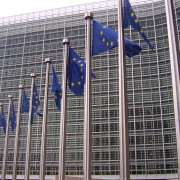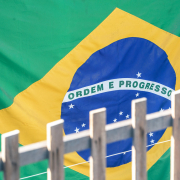The Chinese pesticide industry has, in general, appeared to pick up since 2016. However, agrochemical enterprises still face many challenges with policy, environmental and market issues. This paper addresses the general development of Chinese agriculture as well as future trends among Chinese pesticide manufacturers.
Chinese agriculture output
|
Crop
|
Total Production Rank
|
Per Unit Yield Rank
|
Proportion(%)
|
Per Capita Amount(Global Per Capita Amount is 1)
|
|
Wheat
|
1
|
23
|
16.7
|
0.86
|
|
Corn
|
2
|
39
|
21.8
|
1.13
|
|
Rice
|
1
|
12
|
28
|
1.45
|
|
Soybean
|
4
|
34
|
5.6
|
0.29
|
|
Sugarcane
|
3
|
39
|
6.4
|
0.33
|
|
Pork
|
1
|
–
|
46.8
|
2.42
|
|
Poultry and Eggs
|
1
|
–
|
40.4
|
2.09
|

|
2015 Global Crop Protection Market
|
||
|
Company
|
Sales($ billion)
|
Market Share(%)
|
|
BCS+Monsanto
|
14.1
|
25.0
|
|
Syngenta
|
14.0
|
24.8
|
|
Dow+Dupont
|
8.0
|
14.1
|
|
BASF
|
6.6
|
11.7
|
|
Total of the Top 6
|
42.7
|
75.5
|
|
Total
|
56.5
|
100
|
|
Average of the Top 6
|
71
|
–
|
|
2015 Chinese Crop Protection Market:13% of Global Market, No.3 Globally
|
||
|
Number of Company
|
Total Sales($ 100 million)
|
Average Sales
|
|
2,200
|
500
|
0.23
|
China’s pesticide production capacity in 2015 was 3.741 million tons, 60 percent of which was destined for export, having generated 40 percent of the sales income. It should be noted that the profit margin of exports was also on the low side. Price competition raged between Chinese agrochemical products in the domestic market and carried over into the international market. The country’s export volume in 2015 decreased by 8.06 percent and the export value fell by 16.8 percent, leading to a further price drop. From January to May 2016, export prices suffered a further dip of 16.8 percent.


Changes predicted for the Chinese agrochemical industry in the next 5–10 years: In 2015, China had 2,200 manufacturers with total sales of 50 billion yuan and a 90-billion-yuan retail market comprising terminal market retailers and distributors. In the future, sales will continue to grow, while the number of manufacturers will drop by 500 and some distributors will leave the market.
To help you better understand the needs of the market and explore the available business opportunities in China, AgroPages will organize a China field visit for enterprises interested in the Chinese agrochemical market from 12th Sept. to 15th Sept.




